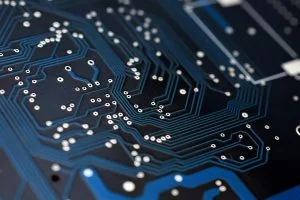Printed Circuit Boards (PCBs) are popular among engineers, developers, and hobbyists and they are readily available for use in many devices that we use in our daily lives. You can find them in portable electronic devices, industrial machines, heavy equipment, communication devices and consumer electronics. The PCBs we see today are usually very complex and comprised of different shapes and materials. Some are flex and rigid, and have variety of components that are wired together to perform a specific task. PCBgogo is an experienced PCB manufacturer that provides turnkey service for PCB assembly prototype and small-batch PCB fabrication. They offer various types of PCBs, fabrication service, and in this article we will talk about 3 different types.
Multilayer PCB
A multilayer PCB is ta PCB that has multiple layers of copper, which is laminated and joined together, and then the components are soldered on top and bottom sides. The inner layers are actually the double sided circuit that are combined with each other to form one thick PCB with multilayers. The components are electrically connected via copper tracks and vias, and pads/ holes link the interconnections. The vias are of different types like PTH, blind and buried. The result is the complex PCB with maximum circuitry on smaller PCB size.
Due to complex processing and evolving technology, demands for PCB layout procedure that can achieve the desired requirements are needed. Also the problems that were occurring in the single or double sided PCBs like noise and stray capacitance was also an issue that caused the invention of multilayer PCB. Multilayer PCBs are usually available from 4 layers to 12 layers, depending on the application and requirements. The layers are usually in even numbers like 4 layer PCB or 8 layer PCB, this is because the odd numbered layers will cause problems of circuit wrapping and similar type issues. The multilayer PCBs are costly to produce compared to single sided because of the extra steps involved during PCB fabrication, however their application are very huge. For example a smartphone can feature a PCB with up-to 8 layers and a military electrical equipment can feature a PCB with up-to 100 layers. This type of PCB with so many layers are very rare and costly.
Read more: PCBGOGO OFFERS TOPNOTCH PCB FABRICATION SERVICES

